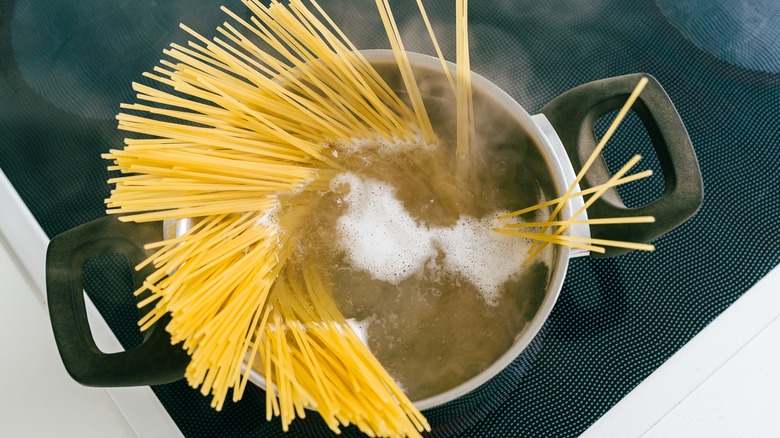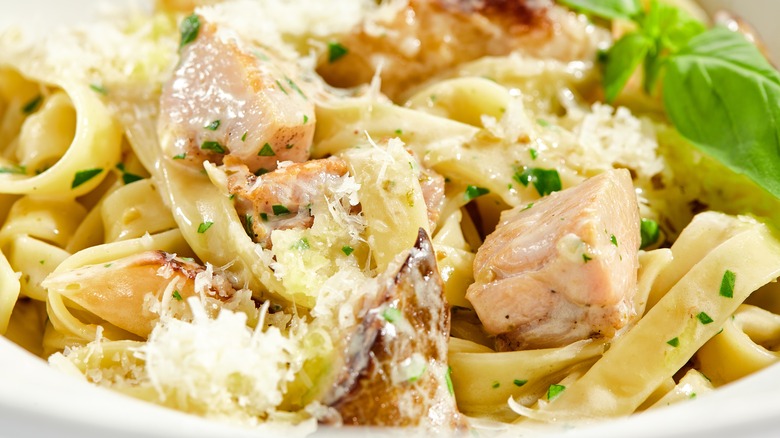The Essential Timing Tip To Remember When Cooking Pasta
There are more than 350 kinds of pasta, from tiny and large to shaped and thick, according to Italy Magazine. Then there are ways to layer and fill pasta with meat, cheese, sauce, and veggies for a wholesome meal the entire family dives into. Add breadsticks with some dipping sauce, and you've got an Italian feast. There are plenty of non-wheat alternatives if you have issues with gluten, notes Spoon University, with options made from legumes, vegetables, and ancient grains. Pasta is one of the most versatile entrées you'll find, and they're relatively simple to make, according to DeLallo. After all, everyone has their favorite pasta night recipes.
Preparing your pasta can be as simple as heating sauce in a pan to go with the noodles. However, one of the mistakes home chefs may make is how they boil the noodles. Whether you prefer fresh noodles or rigid, boiling pasta the right way is the key to soft noodles that twirl easily around your fork. If you need a quick way to gauge how long to boil your pasta for, there is a simple method to get your timing down right every time without using a clock.
Start heating the water first for perfectly done pasta
Trained chef Alissa Fitzgerald, with a decade and a half of experience in professional kitchens, told Insider the key to the timing of boiling the pasta is to start heating the large pot of water first. If you're feeding a family of four, you'll need several quarts of water to give the pasta plenty of room to boil without sticking. It takes some time for the water to come to a boil, which gives you an opportunity to brown the meat, sauté the vegetables, and heat the sauce in a pan. When the water comes to a rolling boil (after maybe 10 to 15 minutes), that's when you add the noodles. Let them boil for anywhere from 5 to 15 minutes, depending on the type of pasta, notes BBC GoodFood.
Other hacks for boiling your pasta include adding salt to the water or using stock or broth to infuse the noodles with flavor. You should also stir the pasta as soon as you put it in the boiling water to prevent it from sticking (rather than adding a drop or two of oil or teaspoon of butter). Make sure to test a pasta noodle a minute or two before you take it out of the boiling water to test its doneness, according to The Spruce Eats. If the outer edges of the noodle are softer than the inner region, your noodles are perfectly done and ready for your sauce, meat, and veggies!

